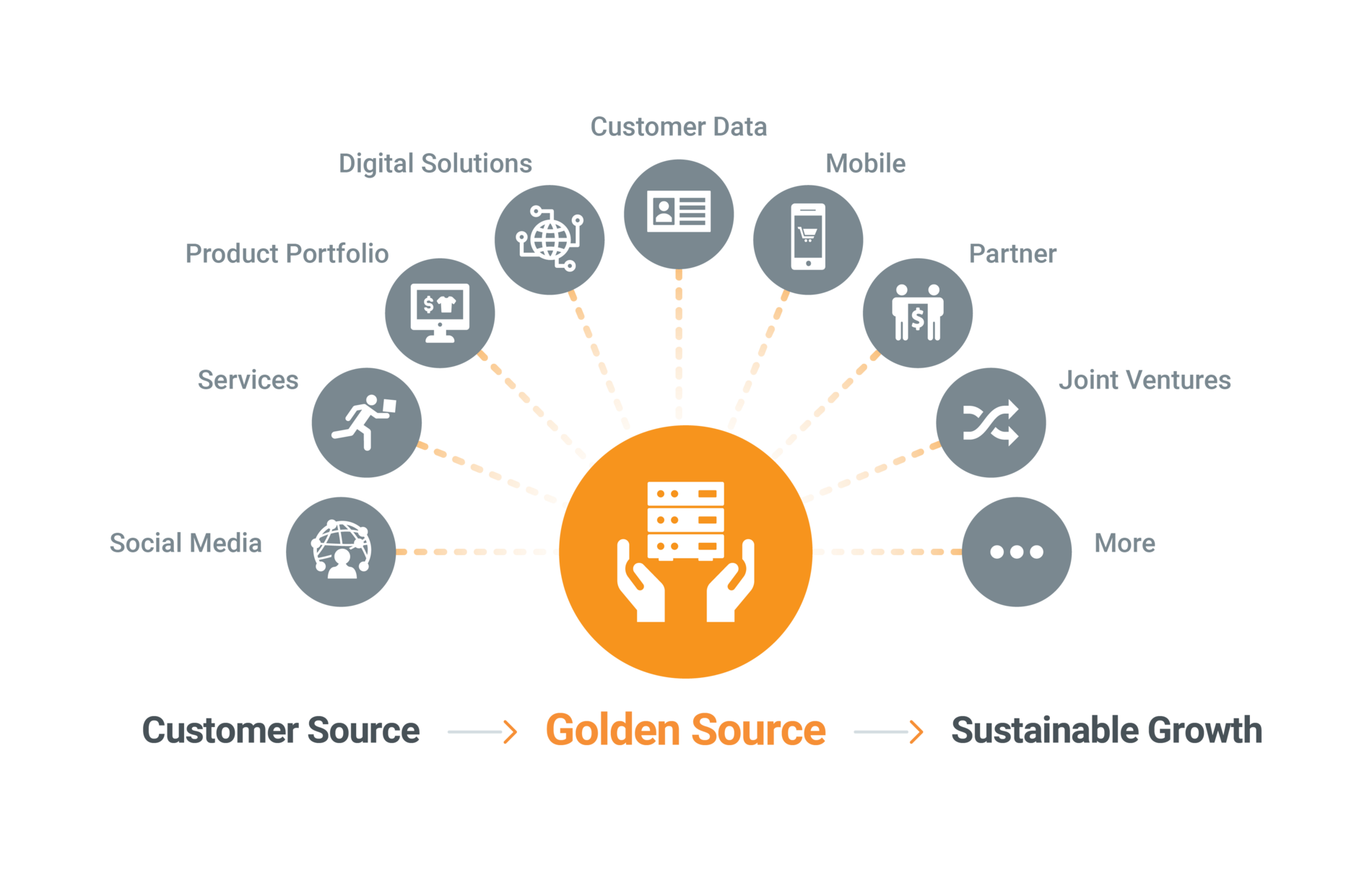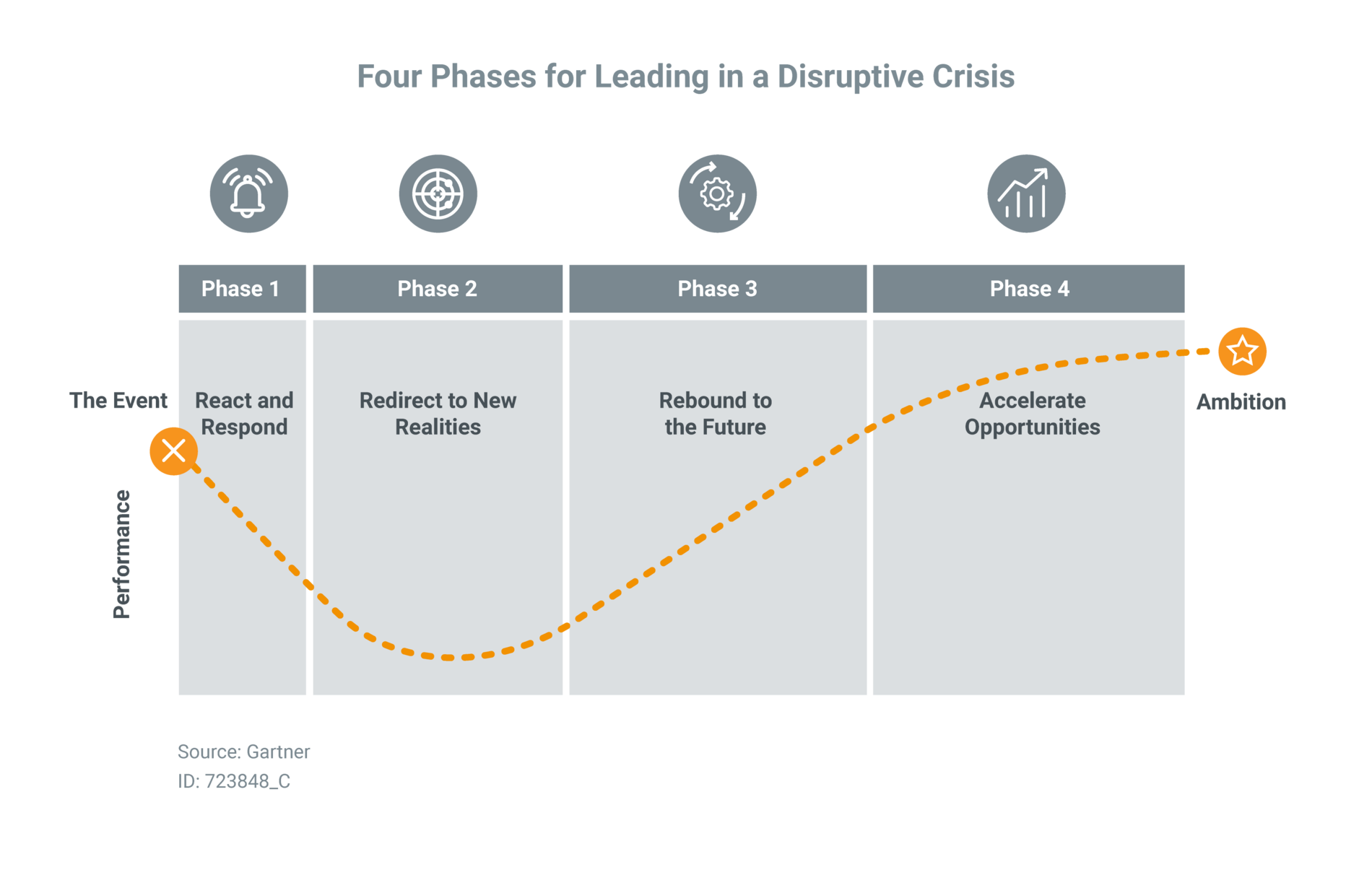Get in touch
Even before COVID-19, companies knew that a digital business model is the key to long-term business success, and the fundamental question that blocks many decision-makers on the path to digital business has not changed: How and at which point is the best way to start the digital transformation? The current situation, as hard as it might hit many companies, at least simplifies the approach to this problem. After all, the priorities have become very clear in the crisis: You have to start where the biggest business slump occurred.
COVID-19 poses an acute threat to our economy. At the same time, the current situation acts as an indicator for the future viability of a company: an indicator of where companies currently stand in terms of digital transformation. It is an indicator of how flexibly they react to massive market changes. And how they are able to use their data. Because the Corona crisis is transforming what was previously an abstract topic for many people, digitalization, into a concrete task - with concrete problems and concrete solutions.
Such a concrete approach to the solution approach lies in-house: customer data. Analyzed and enriched, it is a valuable resource for the development of business solutions that ultimately lead to sustainable growth, such as expanded services, diversification of the product portfolio, cooperations or joint ventures.
Data is also the key to digital business in the Corona crisis: It reveals current weaknesses as well as potential and thus helps to develop relevant business approaches – those that really and directly deliver added value. Unfortunately, there is no patent digital solution; the problems arising from the pandemic are too diverse for that.

Customer Data Maps: The customer journey that was typical for a company’s customers just a few weeks ago is probably no longer true today. However, it clearly shows which touchpoints to the customer are affected by the Corona crisis. The next step is to develop digital solutions that address these issues – from E-Commerce to virtual consulting or improved user guidance and usability to new delivery options. A digital approach here does not necessarily mean replicating exactly in digital form that which has been established up until to now – due to the new circumstances, the customer journey today may look completely different.
For example, the Corona crisis has had a massive impact on the film industry – not only for movie theaters, but also for production companies. The Chinese film production company Huanxi Media is countering this development by cooperating with the video platform ByteDance to make films available for streaming in the future. Disney, too, is now increasingly relying on its streaming service Disney+.
Marketing and Sales Analytics: The buying behaviour of customers since the beginning of the pandemic has changed significantly – and will probably continue to do so. This is not only due to external circumstances, such as limited stationary trade. Demand and interests have also shifted: Customers today buy other products in different quantities, are more willing to compromise on some points, for example in terms of product selection, and perhaps less so in others, such as delivery time. It is worthwhile to continuously analyze the performance of marketing measures and the development of order data and to adjust the business and marketing strategy accordingly.
During a crisis such as the COVID-19 pandemic, companies go through four stages in which they should focus on different measures (source: Gartner). The interpretation and analysis of data plays a decisive role in all four phases.

Phase 1: React and Respond (the first weeks after the beginning of the crisis)
Phase 2: Redirect to New Realities (several months)
Phase 3: Rebound to the Future (several months)
Phase 4: Accelerate Opportunities (continuously, open-end)
The implementation of a digital business model requires more than a coherent strategy and appropriate technologies. Most important is the mindset:
Agility: No one can say with certainty how the economic and social situation will develop in the coming months. This makes it all the more important to implement measures in small but effective steps, to streamline and accelerate processes and logistics, while remaining flexible and open to changes in plans. This will enable companies to react quickly to market changes in the coming months as they (further) develop their digital strategy.
Change of perspective: A crisis is not the time for perfectionism and pedantry – this applies to digital solutions as well as business processes. For the economic system to continue to function stably, compromises must be made and new approaches tried out. Many companies are currently reacting with policy changes and more accommodating regulations. Providers such as Google, Microsoft and Zoom, for example, are making software functionalities available free of charge or offering additional functions at special conditions to relieve companies when shifting to remote work. New digital platforms are emerging and companies are beginning to sell their products via previously unused marketplaces or to enter into new types of partnerships and cooperations, such as the duty-free companies 3Sixty and Shilla.
Thinking about the future: The focus is on the here and now, and especially under time pressure not all factors can always be taken into account. But anyone investing in digital solutions is well advised not to lose sight of the future, at least not completely. If a technological development is scalable and/or expandable, it can still be used or further developed after the crisis.
Redefining target groups: Buying habits can change, especially in times of crisis. Such a shift can take place in both directions – which means: It might be worthwhile to address target groups that have not been the focus of a company until now.
The digital transformation of a company cannot be accomplished in a few weeks, not even during the Corona crisis. However, the situation no longer allows for hesitation and procrastination – it is time for decisions and measures: identify the most important weaknesses and develop functional solutions. Step by step.